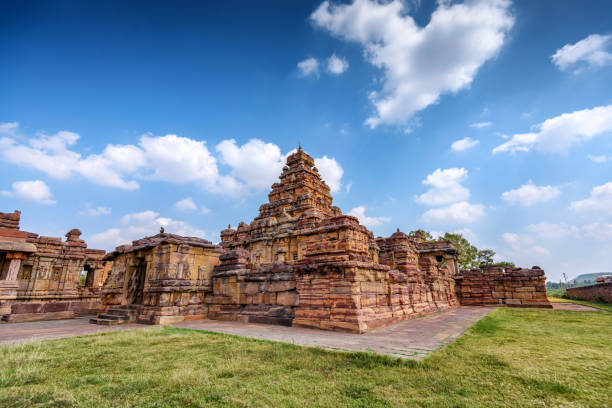Pattadakal


Pattadakal, located in the Bagalkot district of Karnataka, is a UNESCO World Heritage Site that stands as a testimony to India’s rich architectural and cultural heritage. Situated on the banks of the Malaprabha River, Pattadakal is known for its stunning temples and monuments, showcasing a unique blend of architectural styles. It is a significant site for history enthusiasts, art lovers, and religious tourists alike.
Key Temples and Structures
Virupaksha Temple: This grand temple, dedicated to Lord Shiva, is one of the most famous in Pattadakal. Built by Queen Lokamahadevi, it is an excellent example of the Dravidian style, with intricate carvings and towering spires.
Mallikarjuna Temple: Another prominent temple, built by the Chalukya king, is dedicated to Lord Shiva. The temple’s design is similar to the Virupaksha Temple, reflecting the rich cultural heritage of the Chalukya dynasty.
Kashi Vishwanatha Temple: A smaller but significant temple, it is an example of Nagara-style architecture. Its design is similar to the northern Indian temples of the period.
Papanatha Temple: This temple stands out for its exquisite carvings that showcase a harmonious blend of both Dravidian and Nagara styles, reflecting the fusion of cultural influences in the region.
Iconic Architecture and Sculptures
The temples at Pattadakal are famous for their unique architectural features, including intricately carved pillars, ornate doorways, and stone reliefs depicting gods, goddesses, and mythological stories. The presence of exquisite sculptures, including the life-sized carvings of gods and celestial beings, is a highlight for visitors. The walls of the temples are adorned with scenes from the Hindu epics, such as the Ramayana and Mahabharata.